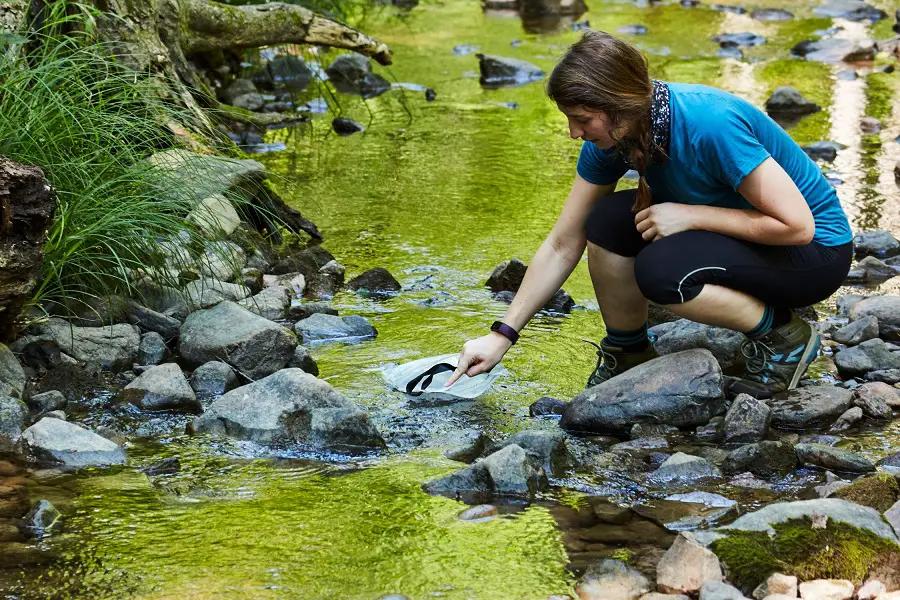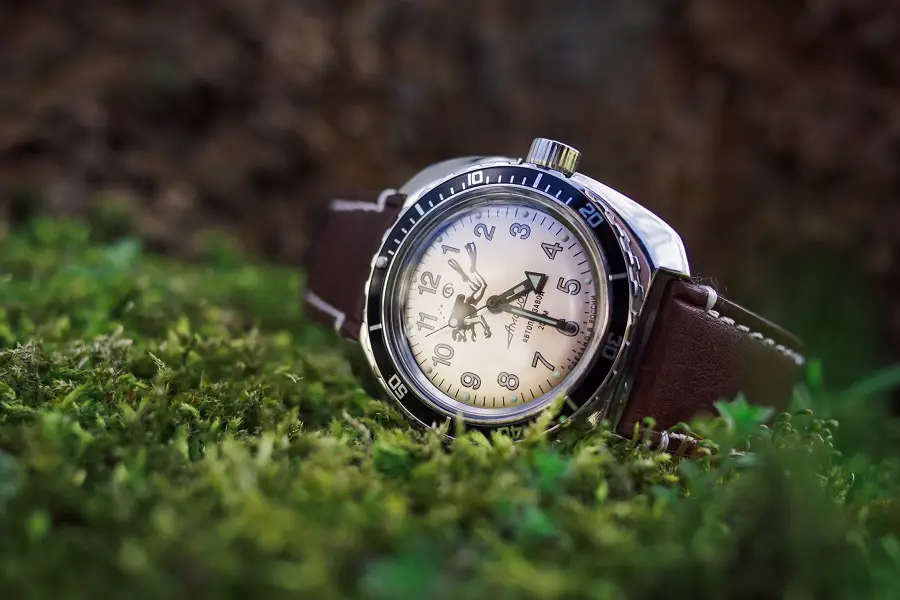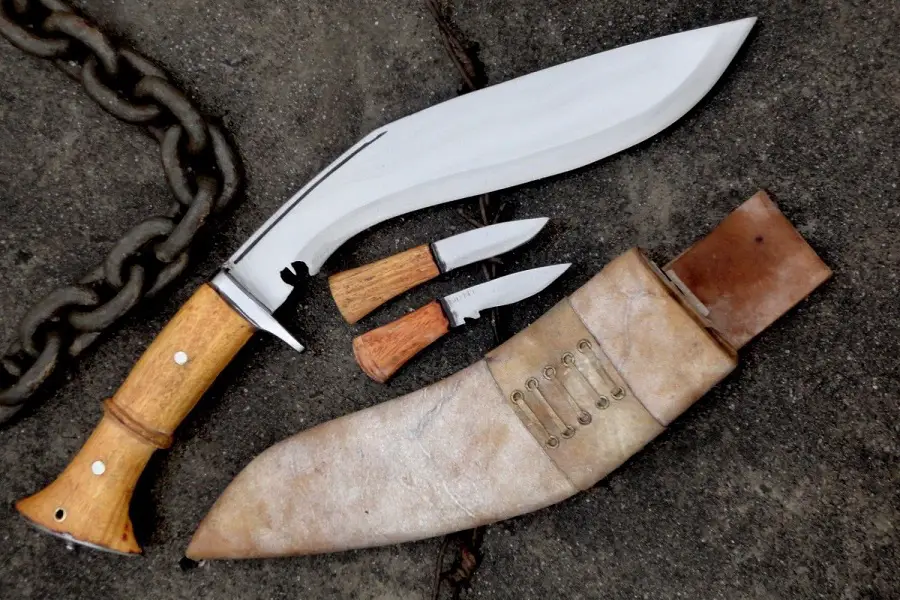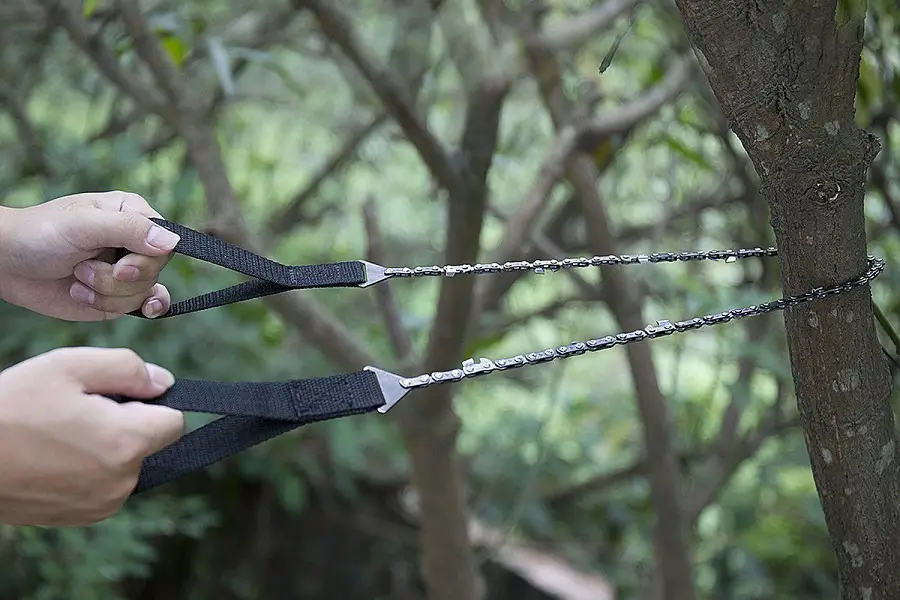In any type of situation, survival or not, water is one of the most important things we need. If you’re packing a kit for emergencies, though, a survival water filter is a must-have, as it gives you a way to turn possibly contaminated water into a clean and hydrating source on the go.
A survival water filter is a portable type of filtration system designed for use in an emergency and they do so in a number of ways. These cleanse water to remove debris and contamination by methods like filter screens, chlorination, UV light, distillation, and boiling, depending on the style you prefer.
A water filter should be at the top of your list when packing a survival kit, but first, you need to get acquainted with them. This guide can answer all of the basic questions about these filters, how they work, and whether they’re as effective as they claim to be, so you can find the right one for your prepping bag.
What is a Survival Water Filter?
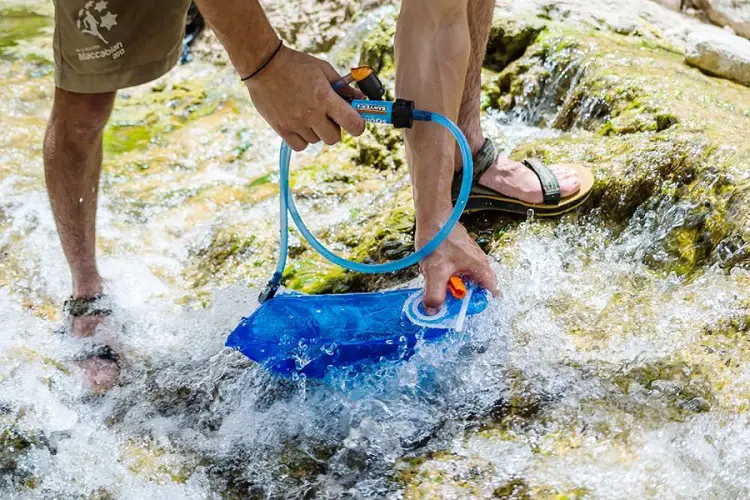
A survival water filter is a type of portable filtration system that you can take with you wherever you go or keep packed away in a prepping kit or bug-out bag. These portable filters can remove contaminants and debris from the water, giving you something cleaner and safer to drink.
The reason for the term ‘survival’ water filter is that most of the water you’ll encounter in a survival situation isn’t safe for consumption. The risk of bacteria, pathogens, and chemicals being present in the water is high when you’re in the great outdoors, and even something that seems okay, like rainwater resting on a plant, could be harboring some hidden nasties.
In a survival situation, your access to things like a kettle for boiling water or the fancy filtration system set up that’s found in your kitchen is limited. That’s why these portable water filters were invented so that people could have a simple method of cleaning water before they drank it so that they weren’t at risk of dehydration before they could be saved.
How Do They Work?
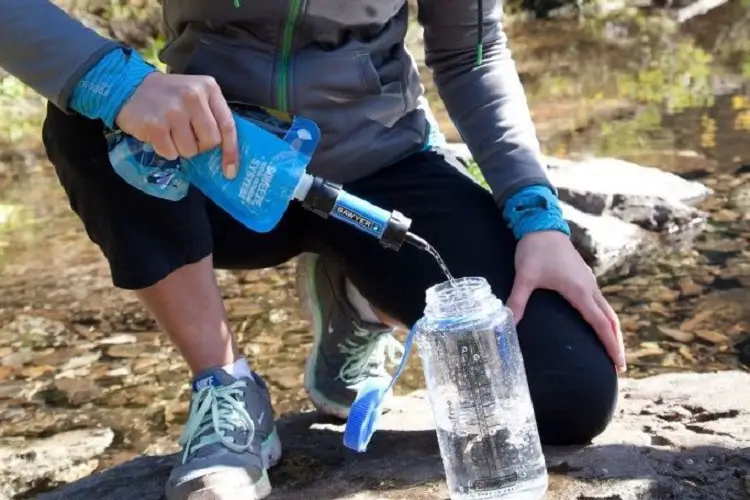
There are many different types of water filters available for use in a survival kit, and they each have a unique method for filtering the water. Most commonly, you’ll find that the filter has some sort of physical screen that allows it to block certain things from getting through, and the size of the pore holes on this screen is what determines that.
When looking at the potential contaminants and debris that you could be ingesting from your water, you’ll see that each of them is sized differently, but all quite small. Some of the most common things we want to avoid include viruses which are just 0.0004 microns wide, algae which can be 5 microns wide, or asbestos which is up to 90 microns wide.
For a filter to be effective, it must have the tightest possible physical barrier, so that these minute particles can’t make their way through. A filter might use a combination of methods as well as the physical barrier, like an ionized coating or activated carbon traps around it that also attracts debris and contaminants and keeps them away.
Generally, the best kind of portable survival filter is an instant one that requires no setup or complex parts. You simply place it directly in the source of the water and drink through it so that it comes out clean on the other side. These are the easiest to carry and use on the go, which is why they’re the preferred method for emergencies.
Portable Survival Filters vs Real Water Filters
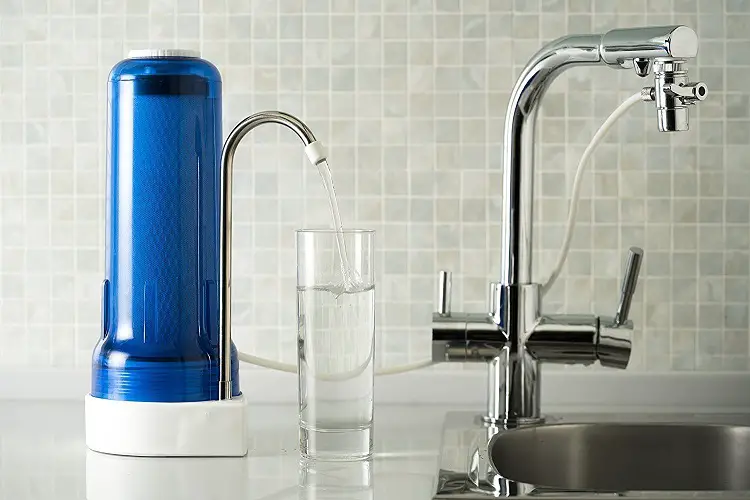
A household water filter operates in a similar way to a portable filter, just on a larger scale. These rely on various forms of media to filter the water and remove debris and contaminants, as well as employing other methods like carbon to trap whatever might have been left behind.
Where the household water filter system differs is that the water it’s using is likely in a better state than something you’d find in the backwoods. There’s less chance that water filtered through one of these systems could still pose a health risk, which is why a portable filter needs to be even tougher.
If possible, you should boil the water after you’ve filtered it, which can give you another level of protection against certain bacteria and viruses. However, in a survival situation this isn’t always an easy thing to do, and relying on a quality portable water filter may be your only hope, so you want to make it count.
The Effectiveness of Water Filters
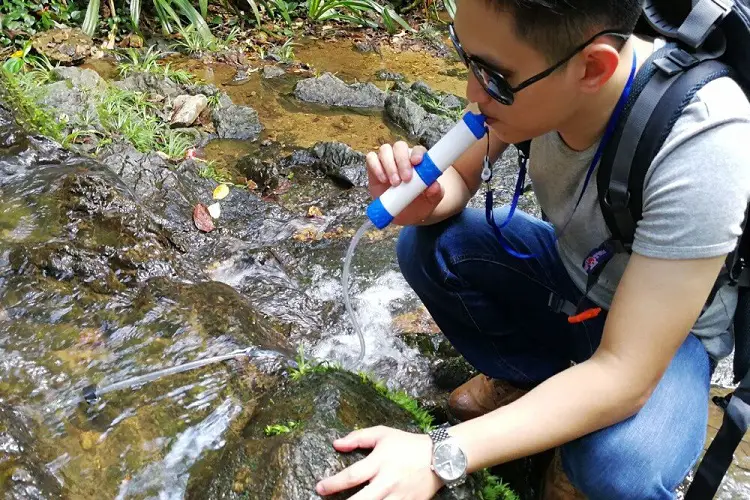
A survival water filter can be effective in cleaning available sources of water so that they’re safe for consumption, but none of them are 100% reliable. There are still viruses and other contaminants that can make their way through these filtration systems, so you should still take other precautions to ensure you’re drinking the safest water possible.
As a product that’s booming in popularity these days, you need to be cautious with the marketing surrounding water filters for survival and the claims that some brands make. For example, if you see that a brand markets its filter as having a ‘nominal’ size of a certain number of microns, that doesn’t always mean that it’s able to block those of that size, so the labeling must be absolute.
Some people may feel more comfortable using a water purifying system designed for backpacking on top of their chosen filtration method, as it gives another level of protection. Waterborne viruses like Hepatitis A and Norovirus can be more common closer to crowded water sources, and a purification tablet or treatment might be required.
However, in an emergency situation, a water filter may be the only thing between you and hydration, and in some cases, it’ll be worth taking a risk. While there are other ways you can be sure to look for the cleanest water source, ultimately you will be putting your trust in the water filter so you want to be certain that it can deliver on its promises.
Choosing a Survival Water Filter
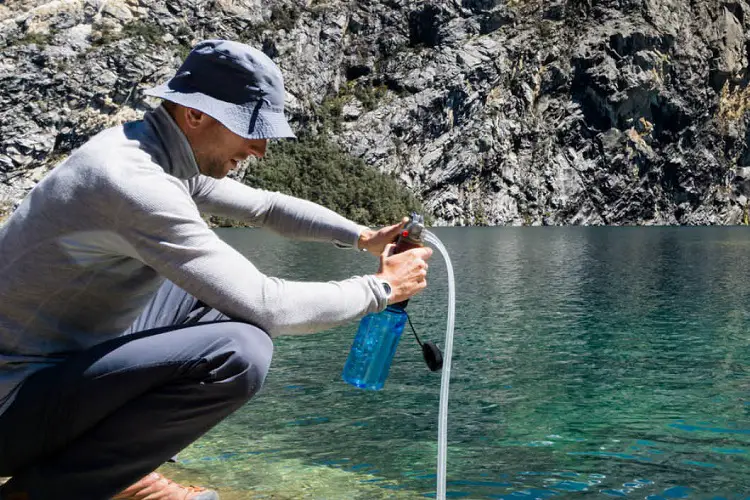
The right survival water filter is the one that suits your needs, whether you want one for a prepping kit or bug out bag, or simply want to take something along camping in case something goes wrong. With that in mind, we’ve got some factors to consider that will ensure you get the best water filter for you.
Size
The size and capability of a water filter should equate to how many people you’ll be supplying its output to, ensuring there’s a gallon each day available for adults. A single traveler will only need a small water filter but someone responsible for taking care of their family should upgrade to one of the larger portable survival filters.
Cost per gallon
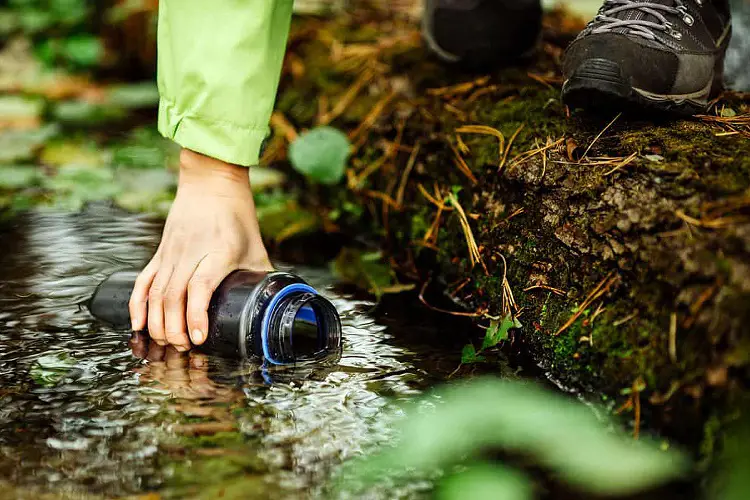
The cost per gallon is how much you’re paying the filter to do its magic before it stops working altogether. To figure this out, take the cost of the survival water filter and divide it by the number of gallons it claims to last for. You want something that’s good value for money but not the cheapest out there.
Replacements
Regardless of the system you go with, choosing one that has a replacement filter is a smart move. This means you can switch to a fresh filter without spending a whole lot of money again or having to buy the rest of the setup. Choose a brand that has readily available and affordable replacements as well, but not so cheap that it makes you wary.
Filter type
Survival filters rely on a range of different filtration methods to do their work, and some may filter out certain things that others don’t or simply not fit with the size of filter you’ve chosen. Some of the more common types of filters used in these systems are compact pumps and ceramic depth filters, but there’s a wide range to choose from.
How to Make a DIY Water Filter
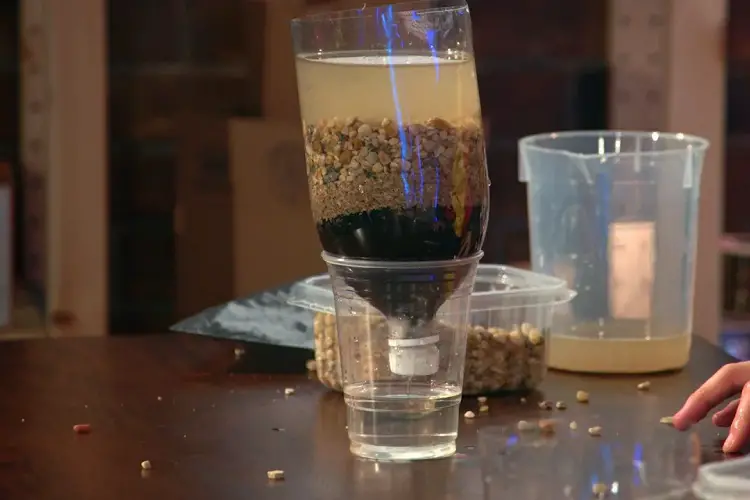
There may come a time when your store-bought survival water filter isn’t available to you, so you need to resort to a more primitive method of filtering water. Gather up some of the following materials and we’ll show you an easy way to create a basic water filter that will serve you until help arrives.
- Cloth (from a t-shirt or bandana)
- Sand
- Pebbles
- Charcoal (cooled chunks from a fire)
- Two containers (plastic, glass, bamboo, hollow log)
Using these items, you’ll be able to create a makeshift water filter, although it won’t be as effective or safe as a real one. To get the best results from your filter, consider leaving it for a few hours unless you need water urgently and then you can let the materials do their work.
- Fill up the first container with the water source you’ve found.
- Use the cloth and place it over the top of the second container and then place the pebbles on top of the cloth.
- Pour the water from the first over the pebbles and cloth into the second.
- Remove the pebbles from the top of the container and swap it with sand on top of the cloth. Repeat the previous step and filter the water through.
- Crush up charcoal into small pieces and put it on top of the cloth next. This final step is the most effective at removing contaminants and will make the water taste better as well. Repeat this step a few times.
- If possible, create a filter that allows the water to run through the three materials after each other without having to switch anything over.
A Vital Source of Clean Water
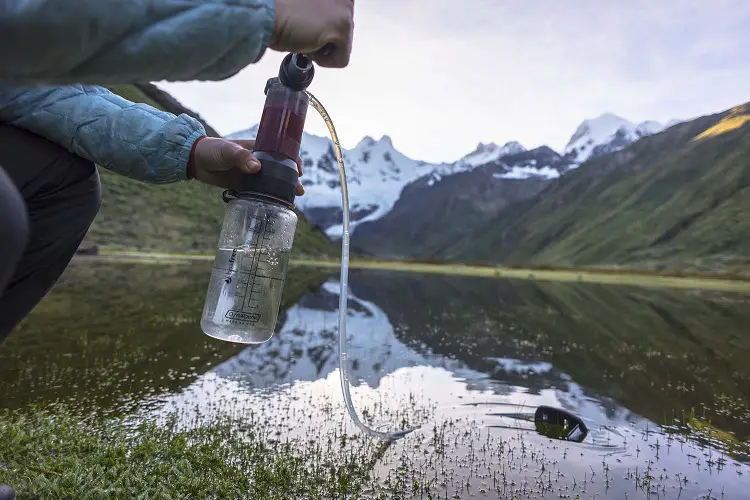
You won’t get very far in life without access to clean drinking water, and it’s even more important when you’re trying to survive in an emergency. With a water filter in your kit, you’ll be prepared for the most crucial part, and ensure that you and your loved ones have access to fresh H20 to keep you hydrated and healthy.
Related Questions
A personal water filtration system is a godsend when you’re in survival mode but with so many types and features to choose from, it can be overwhelming to choose the best one. Once you have a water filter you trust, take the time to learn how to use it, so you’re ready and able in an emergency.
How Long Does a Survival Water Filter Last?
A survival water filter is usually rated by how long it lasts in units of water filtered, so make sure you choose one that suits your needs. A standard 0.2 microfilter will run through around 1,040 gallons of water, and a smaller replacement carbon filter does a lot less at around 25 gallons of water.
How Many Times Can You Use a LifeStraw?
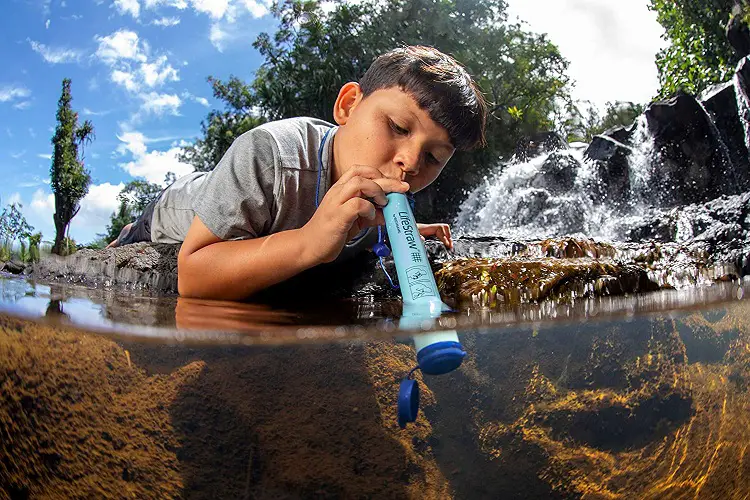
The Activated Carbon and Ion Exchange straw from LifeStraw will filter around 40 gallons of water before it stops being ineffective. If using it for everyday life, you’ll want to replace it at least every two months, and the filter systems have an average shelf life of around five years in total.
How Much Water Should Be In a Survival Kit?
The general guidelines for water intake state that each adult should have one gallon of water per day available to them in a survival kit, as well as a backup filtration system for once this runs out. This covers your daily drinking water as well as water used for sanitation purposes, and both are critical to your survival.
References:


